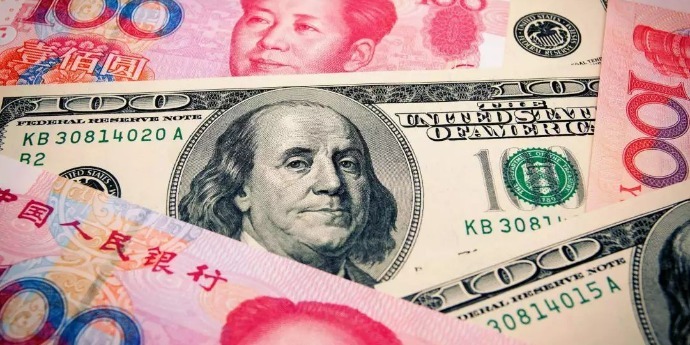Wall Street’s Upbeat Trajectory
The U.S. Stock Market’s Flourishing Path
The U.S. stock market recently basked in prosperity, reaching unprecedented highs. On July 16, the three major U.S. stock indices climbed, with the Dow Jones Industrial Average hitting a historic closing peak, surging 742.76 points or 1.85% to end at 40,954.48. The S&P 500 leaped 35.98 points or 0.64% to 5,667.2, while the Nasdaq eked out an increase of 36.77 points or 0.2%, closing at 18,509.34.
Future of U.S. Equities
Assessment of Sustained Growth
Can the U.S. stock market maintain its upward momentum? Goldman Sachs Asset Management, in their mid-year outlook, projects that the U.S. economy will decelerate to a growth rate of about 2% in the latter half of 2024. Due to diminishing corporate earnings growth and politically-related anxieties, stock indices are expected to remain fairly stable. Simultaneously, Goldman Sachs Asset Management cautions U.S. stock investors to diversify their portfolios away from the previously surging Artificial Intelligence (AI) sector, which housed the “early winners.”
Outlook for the Latter Half of the Year
Economic Positives and the Risk of Overvaluation
Pictet Wealth Management suggests that a robust economy and prospects for rate cuts will continue to propel the U.S. stock indices upward—though gains remain concentrated in a few “mega-cap” stocks, often characterized by bubbly valuations. In contrast, European economies have skirted recession, with manufacturing showing promising signs of recovery and earlier interest rate cuts than the U.S. Valuations for Eurozone small-cap stocks have significantly improved. Compared to the S&P 500, the valuation discount of the STOXX Europe 600 Index is substantial—even accounting for sector differences—and European companies are returning more capital to shareholders amidst signs of earnings growth. In Japan, the Tokyo Price Index (TOPIX) is expected to maintain robust earnings growth in 2024. Despite a slight increase in valuations for component stocks in May, the 12-month forward earnings ratio of 15 times remains well below the long-term average.

Asia-Pacific Investor Shift
From Cash to Equity
Fidelity International’s 2024 Asia-Pacific investor sentiment survey reveals that, with growing expectations for a Fed rate cut, risk appetites have burgeoned, shifting from cash towards stocks. Given that cash assets like U.S. dollar time deposits have reached the highest interest rates in over a decade, Asia-Pacific’s retail investors allocated 48% of assets in cash and time deposits. However, anticipation of a global rate cut cycle in the next 6-12 months has diminished their enthusiasm for cash, with stock products emerging as the favored vehicle for entering the next market cycle.
Fidelity International’s Global Solutions and Multi-Asset Head remarks that market conditions are set to sustain the momentum of U.S. and Japanese stocks. Robust U.S. economic growth with healthy corporate profits, alongside structural advantages and corporate reforms in Japan, are key drivers of valuations in these markets. However, this trend may not translate to all sectors—particularly in the U.S., where efforts are underway to unearth value beyond market bubbles with mid-cap stocks presenting reasonable prices, strong long-term growth potential, and adaptability to higher interest rates.

Spotlight on Asian Markets
Asia’s Resilience Amidst Global Dynamics
Invesco’s Chief Investment Officer for Asia (excluding Japan) Mike Shiao believes that robust domestic demand and global demand recovery will likely extend the Asian (ex Japan) stock market’s ascent in the latter half of 2024. It is anticipated that India will roll out policies to further bolster manufacturing, with public and private capital expenditures set to sustain a virtuous growth cycle.
In terms of ASEAN nations, following reopening, the monthly influx of Chinese tourists to Southeast Asia has steadily risen—a trend expected to accelerate as the Chinese economy recovers, potentially boosting the region’s tourism industry. ASEAN is also likely poised to benefit from anticipated export growth, especially in the potential surge of the electronics market. The Philippines’ economy is buoyed by sound economic policies, a youthful demography, and growing private consumption. Indonesia benefits from ongoing urbanization, a young population structure, consistent income growth, and diversified supply chain advantages.
“For investors, global economic volatility remains an uncertainty, especially given the prospect of prolonged higher interest rates in the U.S.” Mike Shiao notes, “Impending U.S. elections may provoke global and regional trade tensions, potentially leading to short-term fluctuations before the year’s end. Valuation-wise, Asian markets appear attractive. Asian (ex-Japan) stocks are valued at historically low levels, trading at a 35% discount to developed markets. We are optimistic about the earnings growth potential of Asian enterprises for the rest of the year. Favorable valuations and the prospect of earnings growth further enhance the region’s investment allure.”































